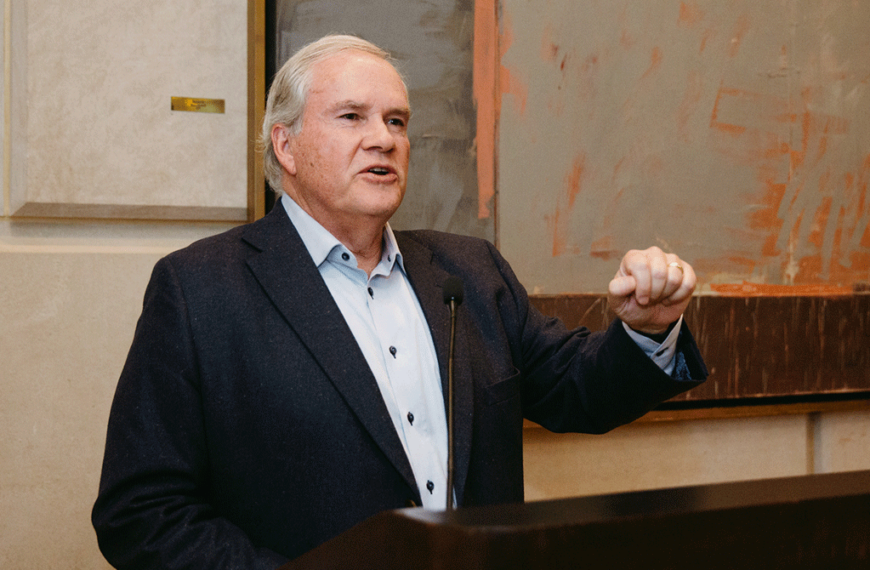Three years of saving lives, elevated personal risk and unprecedented professional stress left hospitals across Texas staggering for footing as the COVID-19 pandemic, by most standards, finally dissipated to a memory.
But the onslaught of the pandemic was just a prologue. What Texas hospitals got in 2023 as a reward for their service – from a coalition of health insurance interests and like-minded lawmakers – was blame, and even a degree of demonization.
Those insurer groups and legislators were resolute in their push to make hospitals the scapegoat for high health care costs – ignoring the documented, divergent financial paths of the thriving health insurance industry and a hospital system with half the facilities in the state operating in the red.
The scapegoating operation came dangerously close to working. A series of bills with devastating implications for hospitals found traction in the Texas Legislature’s 2023 regular session.
None of them passed. But the concepts at their cores, the rhetoric that drove them and their champions will likely be back for another try in 2025.
That’s why, during this next year, the Texas Hospital Association is embarking on a focused messaging effort to educate the public on what the state’s health care infrastructure needs in order to thrive, what drives cost in health care delivery, and how big for-profit health insurers are using every tactic available to minimize coverage and maximize profits.
THA President/CEO John Hawkins says Texas hospitals will, first and foremost, work to “rebuild the foundational understanding of the role and the importance of hospitals and health systems in the state’s health care infrastructure and in their communities – from an access to care standpoint, quality care, and an overall economic impact.”
How the stage was set
The seeds of the anti-hospital movement in 2023 sprouted from several factors, Hawkins says.
One was public frustration over hospitals’ and public health authorities’ response to an unprecedented situation during COVID-19. Facing a virus that was sickening and killing thousands of people in a short time, health care facilities implemented and advocated for vaccine and mask mandates to protect patients and hospital personnel – policies that didn’t meet with universal approval in a highly politicized environment. Restrictive visitation policies during COVID-19 “created some angst out there if people couldn’t get in to see their loved ones, particularly in end-of-life situations,” Hawkins notes. “So there was a lot of frustration with the health care sector as a whole, because there wasn’t a unified public vision for public policy and how we dealt with pandemics.”
A second factor was the reaction of the business community, he says, and its focus on the cost of care given inflationary and supply-chain struggles of the past couple of years. Third, health insurers and their allies had a greater opportunity to dictate messaging – while hospitals were occupied with caring for an unprecedented number of patients and with infrastructure challenges.
“Given the fact that for three years, we were laser-focused on blocking and tackling to get through COVID, we weren’t really out there continuing to tell our story about the importance of hospitals and health systems in the health care ecosystem – and then even larger than that, what an economic impact they are in their community,” Hawkins said. “So those three things provided an opportunity for some motivated adversaries to push their agenda, a lot of that under the guise of lowering health care costs.”
THA did make a concerted effort to elucidate the state of the hospital industry for the Texas Legislature entering the 2023 session, including through a pair of late-2022 reports that illustrated what hospitals had endured since early 2020. The THA-commissioned Kaufman Hall report found that almost half of all Texas hospitals were operating in the red, nearly one in 10 was at risk of closure, and the closure risk rose to 26% of rural hospitals. And THA’s COVID-19 Impact Report painted a narrative-driven picture of how the pandemic had zapped the vitality out of every aspect of hospital operations.
But the “motivated adversaries” Hawkins references found their audience – and their legislative vehicles that would have been a boon for the insurance industry, but an unmitigated disaster for access to care across the state.
Withstanding the onslaught
As the 2023 session unfolded, anti-hospital attacks became sharper, matching the jaggedness of some of the legislation accompanying that rhetoric. Powerful legislators – chairs of some of the Legislature’s most important committees – became flag-wavers for the effort.
Banning hospital outpatient payments – labeled and known broadly as “facility fees” – emerged as the big fish for Big Insurance and their legislator allies. Prohibiting them – as multiple bills, in various iterations, sought to do – would have dismantled access to care across Texas. A THA survey showed prohibiting hospital outpatient payments would have resulted in outpatient clinic closures for nearly 70% of hospitals.
But THA advocacy – from the CEO’s desk all the way to the grassroots level – helped defeat all facility-fee ban legislation. Frank Beaman, CEO of Faith Community Health System based in Jacksboro, testified for THA against one of those hospital outpatient bills in the House Select Committee on Health Care Reform. Months later, Faith Community opened a new emergency room in Bowie, which hadn’t had an ER since February 2020.
“What was surprising is, I don’t think they knew that there was one of those situations of unintended consequences,” Beaman said of lawmakers. “They write this into the bill about … you can’t charge for anything that has to do with the operations of the hospital. Well, that doesn’t make any sense. That would have shut down all of our clinics, and we wouldn’t have been able to open the Bowie emergency room, under the way those two bills were drafted.”
Government setting of payment rates – rather than the market force-driven approach that typically characterizes business-friendly Texas – became another insurer-friendly approach with considerable support. THA managed to scuttle multiple different legislative approaches to instituting rate-setting as well.
Hospitals withstanding the onslaught and defeating these bills didn’t mitigate the shock within the industry of what unfolded at the Capitol all session long. THA members were surprised, Hawkins said, at “how quickly our Legislature – who’s been fairly conservative over certainly the last decade or so – how quick they were to grasp onto these anti-business, anti-free market principles that exist … and how quick they were to really move to price-setting and things that we know will ultimately be debilitating for providers, and then ultimately access to quality care in the communities that rely on those providers.”
THA Teachings: Goals for 2024
Along with attempting to rebuild the foundational understanding of hospitals’ importance to Texas communities, Hawkins says THA will educate Texans and their state representatives on the commercial relationships between health care facilities, insurers and other stakeholders who make care delivery possible.
“These are very complex business arrangements,” Hawkins said. “Our challenge is to boil those down into messaging that the public and lawmakers can understand. Then, the third thing is just building that kind of grassroots infrastructure where our members can take those messages out to the field – whether that be their legislative delegation or chambers of commerce, other community groups and the media in their areas.”
Finally, THA will continue its push for the Legislature to fully fund hospitals’ uncompensated care in the Medicaid program – bringing reimbursement closer to the true cost of care – and to focus on policies that reduce the number of uninsured in the state, because those costs are being shifted to the private insurance market, exacerbating the overall cost of health care.
For a refresher on the full scope of troublesome legislation THA beat back during the 2023 regular session – and the needed new laws its advocacy netted at the Capitol – review THA’s end-of-session report, Health Care and the 88th Texas Legislature: Outcomes for Texas Hospitals.
Related articles from The Scope
Bollard Mandates for Hospitals Would Be a Barrier to Care
It’s not uncommon for the Texas Legislature to lay an…
Open-Door Policy: THA and the 2025 Texas Legislature
Even as modern politics continues to be synonymous with turbulence…
A Healthier State: THA’s Broad and Ambitious Priorities for the 2025 Texas Legislature
We’re now past the general election, and Texans across the…
After the Election: The Outlook for Texas Hospitals
Last week’s general election brought clarity for the Texas Hospital…
Saving the Savings: Keep the 340B Drug Program Accessible for Our Hospitals and Patients
It’s a tricky thing to set up any program –…
The Texas Standard: Champions of Charity Care
Caring for the entirety of a large state with a…







